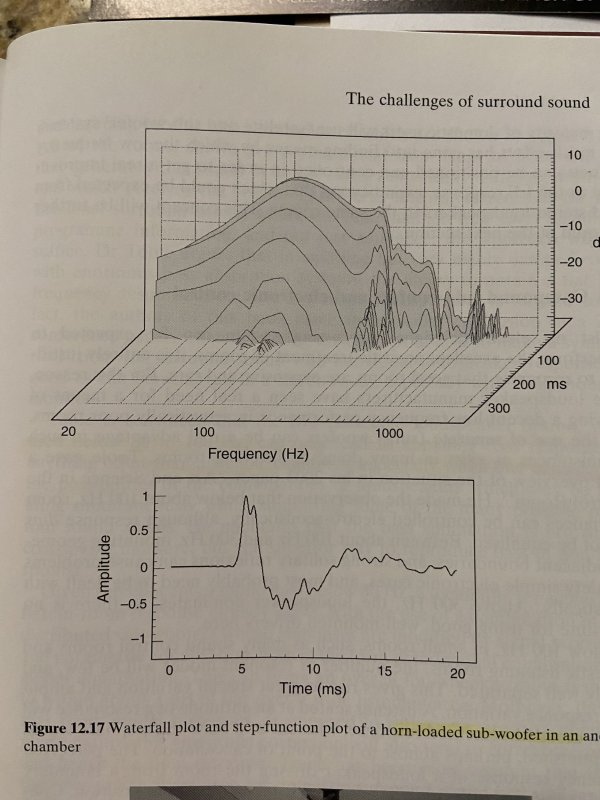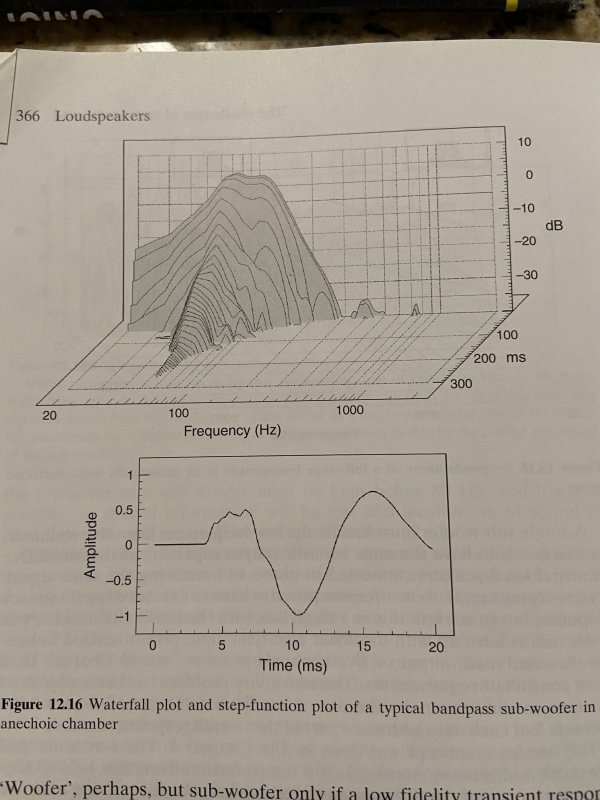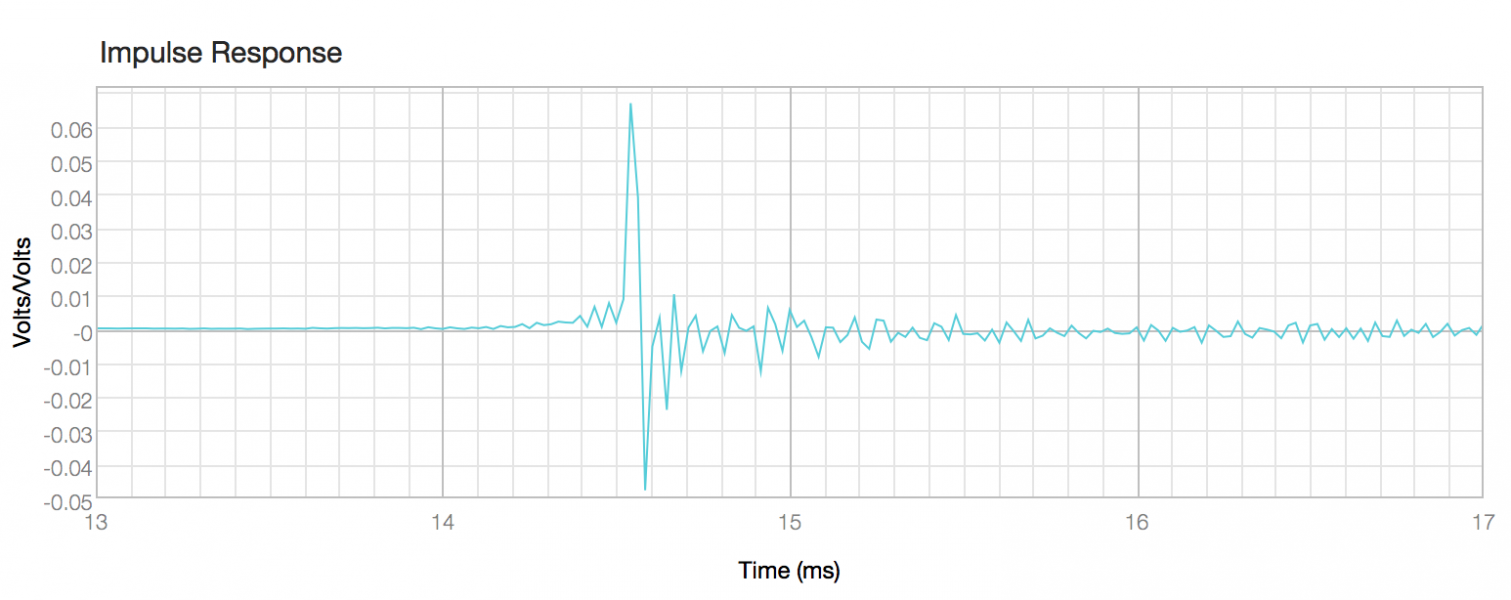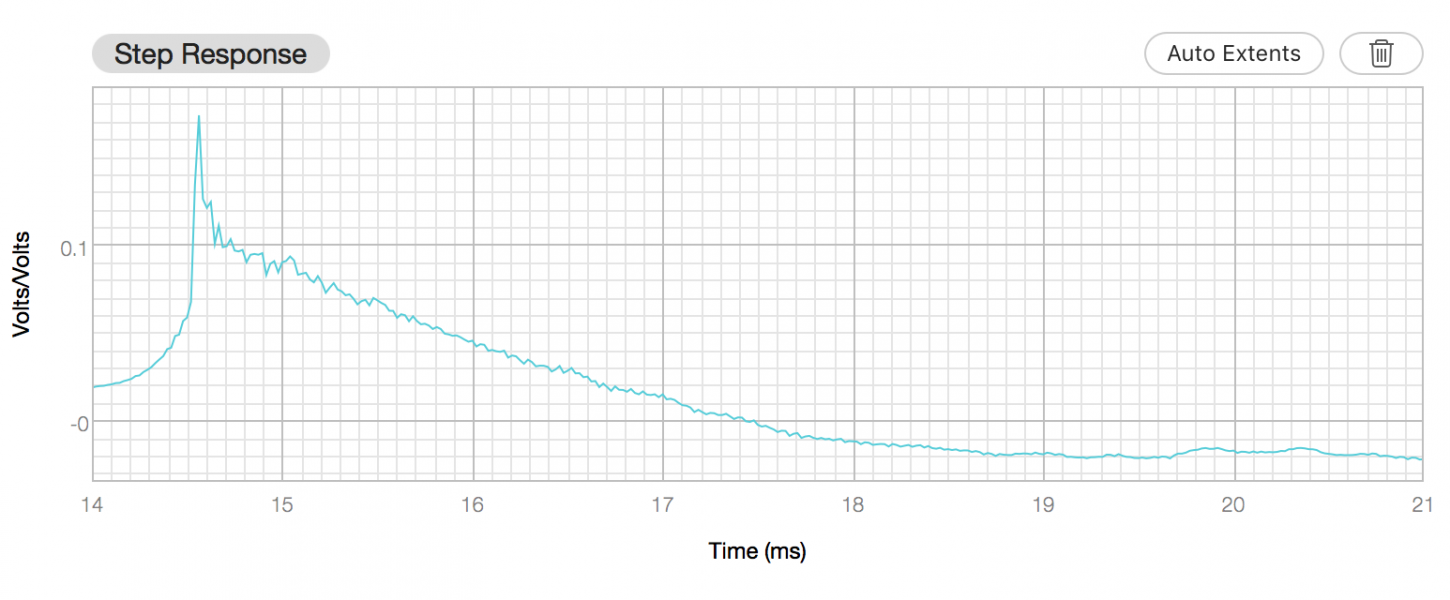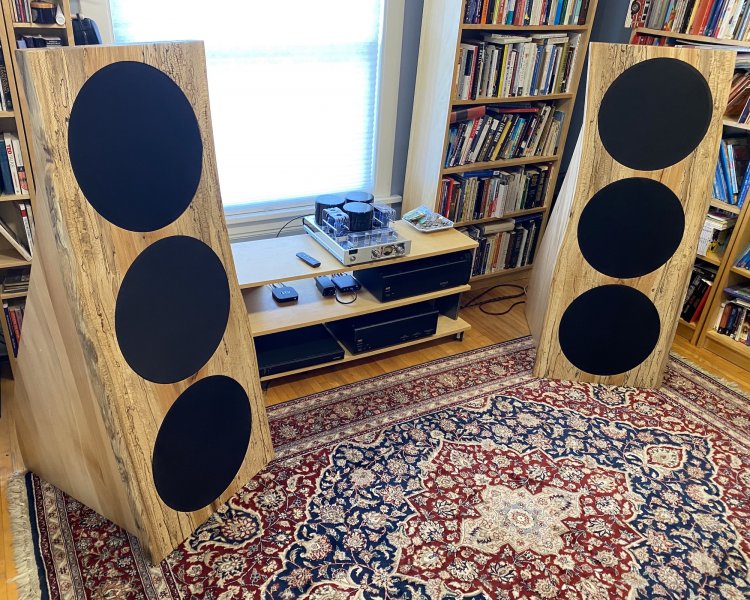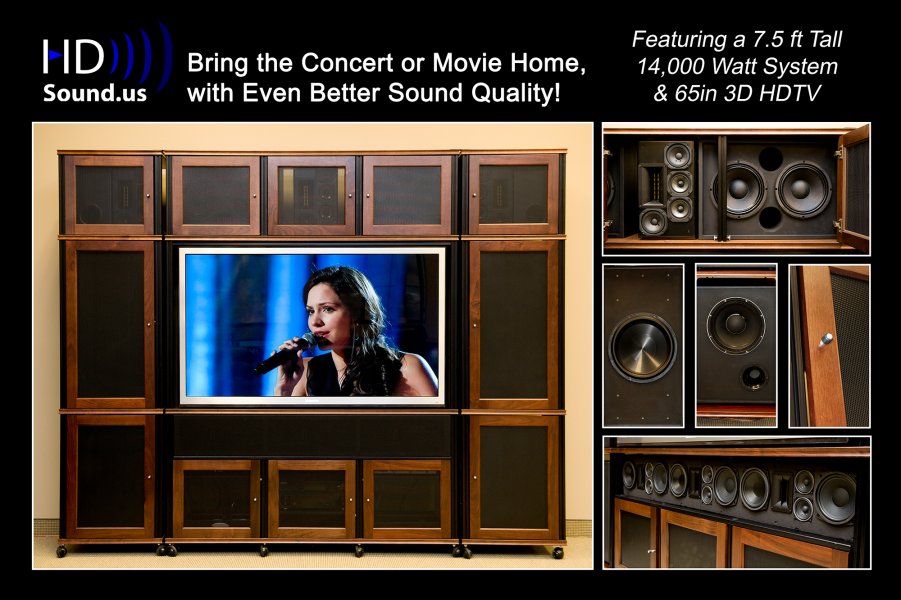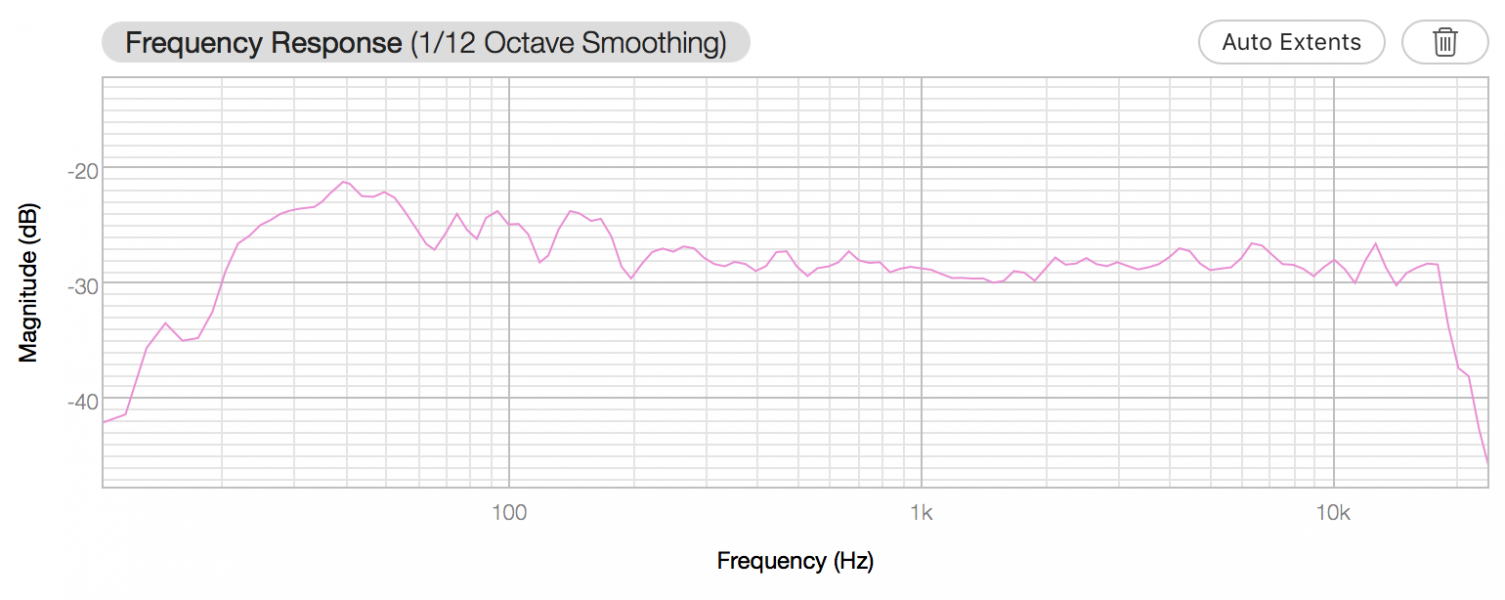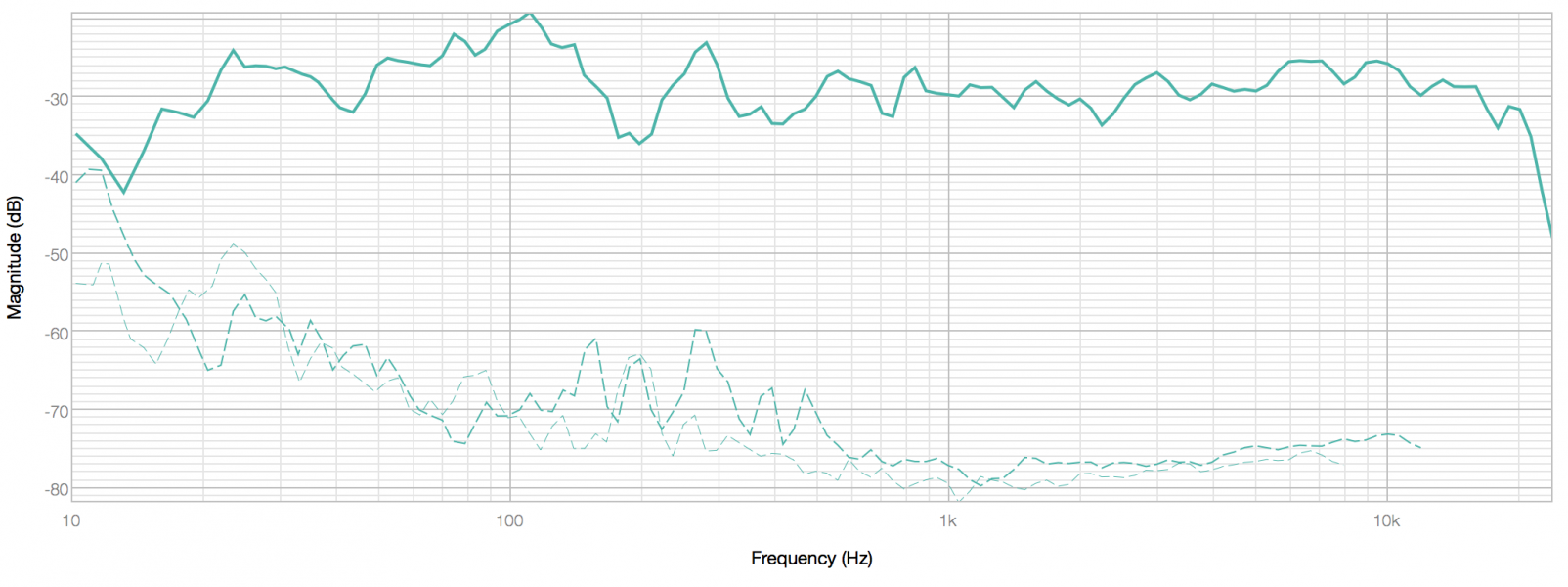Here is another explanation from Peter Moncrieff of International Audio Review Opposites in Reactance
Consider next reactance, as another example of opposite behavior. Conventional subwoofers have large reactance, plus severe reactance changes, at low frequencies. This reactance comes from the driver's free air resonance, compounded by the resonance of the enclosure volume with this driver, compounded by the resonance of the port or vent (if any). This reactance creates four huge sonic problems, which preclude correct bass reproduction. First, this reactance sets up a barrier fence at a certain frequency, below which the conventional subwoofer cannot go, to reproduce the full bass spectrum. Second, this reactance stores energy and then releases it much later in time (as bass overhang and ringing). This spurious delayed energy release not only creates a phony bass sound (boomy overhang), but also obscures subsequent musical information (of all frequencies) that happens to occur immediately after each bass transient. Third, this reactance robs energy from the initial bass transient (the energy contained in that delayed energy release has to be stolen from somewhere), so the initial attack of bass transients lacks sufficient dynamic impact. Fourth, this reactance grossly corrupts the time domain waveform put out by the conventional subwoofer, so that its contribution to the overall musical transient does not properly add up with and cohere with the waveform put out by the main loudspeaker for this same musical transient.
But again the new TRW subwoofer is just the opposite, of conventional subwoofers. It does not have any reactance at very low frequencies. Thus, the TRW subwoofer does not evince any of these sonic problems that reactance causes in conventional subwoofers. First, the TRW does not have any barrier fence precluding response to very low frequencies, and can happily reproduce the full spectrum at full amplitude all the way down to DC. Second, the TRW does not have any spurious delayed release of energy, so its bass quality is inherently correct and tightly defined, without any phony boom or overhang. And the TRW also thereby allows you to hear much more information immediately after each bass transient (e.g. the woody timbre of a sounding board), so everything from music to special effects sounds much more real. Third, the TRW does not steal any energy from the initial bass transient, so you get the full dynamic impact of each bass transient, again getting you much closer to sonic reality. Fourth, the time domain waveform put out by the TRW is inherently accurate, instead of inherently screwed up, so its waveform correctly adds up with and coheres with each musical (or sound effects) transient put out by your maim loudspeaker, to give you for the first time in your life a correct, coherent transient. This last point might seem to be the most subtle sonically, but it turns out to actually be the most pervasive, affecting more sounds and more of your listening than you would ever have suspected.
Having owned the TRW Rotary subwoofer for 6 years, I can say Peter is correct.




